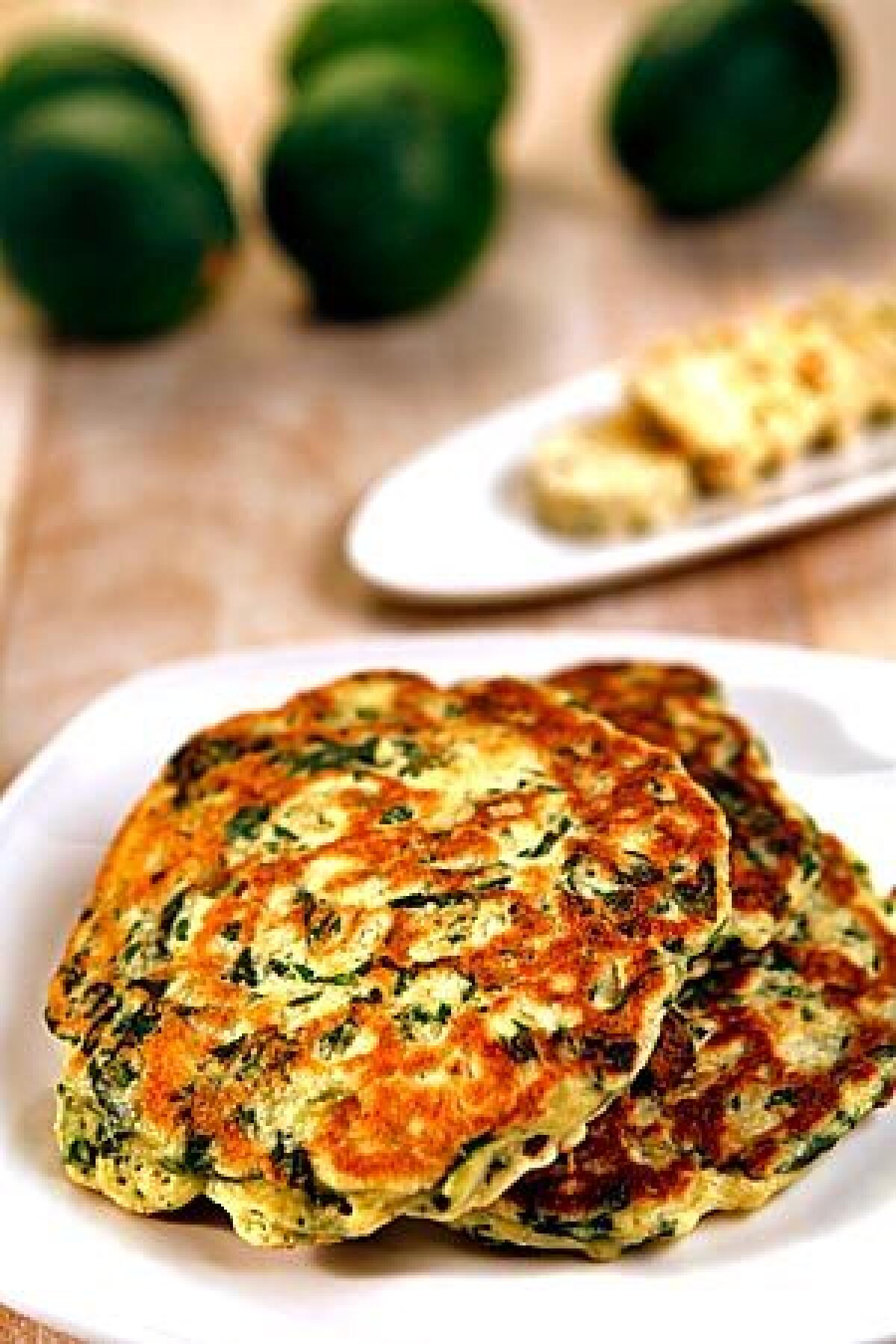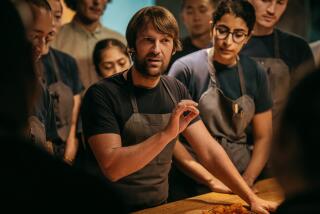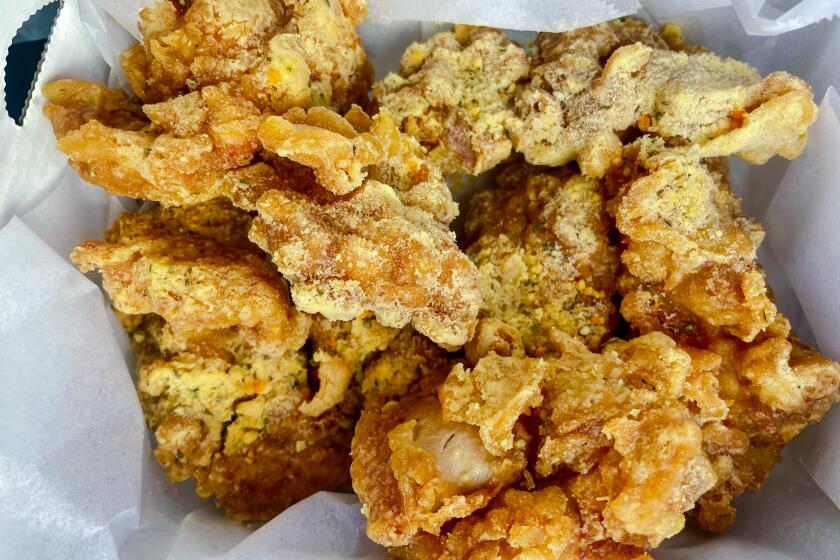The California Cook: Breaking the vegetable rut

It occurred to me as I was pulling a pan of roasted potatoes out of the oven for what was probably the third time in as many weeks â I was getting in a rut.
And with the markets flooded with the first spring produce, I was feeling an urgent need to step outside my little roasted potato box and cook something different.
Donât get me wrong, thereâs nothing wrong with roasted potatoes, particularly not when theyâre those firm little Ozettes from Weiser Family Farms. Cut them in half lengthwise, slick them with olive oil, roast at 400 degrees for a half-hour, then give them a good stir and add seasonings (garlic, of course, salt and pepper, rosemary, onions, in the summertime even slivered red bell peppers) and continue roasting for 30 more minutes or so.
Theyâre perfect: well-browned, crunchy on the outside, fluffy on the inside.
But three times in three weeks? Thatâs getting a little much.
So I spent a couple of weekends cooking from a half-dozen recent books â but only ones by authors Iâd never read. I found two whom I really loved â and they couldnât be more different.
Well, actually, their food couldnât be more different. Whereas Skye Gyngellâs food is quiet and (dare I say it?) feminine, Yotam Ottolenghiâs food is so vibrant it practically jumps off the page, with big flavors from what seems like a world atlas of cuisines.
What they have in common is that theyâre both popular British chefs, though they are still largely unknown in the United States. That shouldnât last long.
I first learned of Gyngell from our restaurant critic, S. Irene Virbila, who pronounced dinner at Gyngellâs Petersham Nurseries CafĂŠ outside London one of her most memorable meals of last year.
The name stuck in my head, for obvious reasons (wasnât that one of the good elves in âThe Lord of the Ringsâ?). But the food sounded so good too. âEach dish was a perfect expression of the ingredients and the season,â Virbila wrote, adding that Gyngell made even old favorites seem new and exciting.
At the other end of the flavor spectrum is Yotam Ottolenghi, who runs four food shops and restaurants in the London area and is a columnist for the Guardian newspaper.
He repeatedly refers to âLevantineâ influences in his food, but besides the Middle East, there are also strong traces of Indian, Italian and French cooking. I guess in the end it could best be described as âModern London.â Oh, and by the way, itâs all vegetarian.
In fact, so different are these two books that cooking from them at the same time could give you whiplash. If I had to choose between the two, Iâd say I probably had more fun cooking from Ottolenghi â talk about a rut-buster, itâs totally different from my usual fare â but Iâll probably wind up going back to Gyngell more often.
To make the tests more fun, I went to the market specifically looking not for my favorite ingredients but for vegetables that have fallen off my playlist â either ones Iâve largely forgotten about or ones I mostly use in background roles.
I mean, really, who looks forward to cooking carrots and spinach?
The first dish I tried was a carrot salad from Ottolenghiâs book âPlenty.â He says the salad is Moroccan â and itâs somewhat familiar in that way, with carrots cooked until tender but crisp and dressed with a complex spice mixture â but the finishing touch of yogurt and a couple of handfuls of cilantro (literally! 21/2 cups!) seems to take it someplace else entirely. Maybe Turkey? Who knows, but the flavors really pop.
Gyngellâs book is âA Year in My Kitchen.â Compared to Ottolenghiâs, her recipe for carrots with honey, lemon zest and thyme looked downright placid. Ho-hum. Simmer carrots in water and honey until theyâre tender; increase the heat to reduce the glaze. Been there, done that. Cooking 101.
That is, until you taste it. The combination of astringent fresh thyme, aromatic lemon zest and slightly bitter honey (she recommends chestnut, Californians could also try eucalyptus) coax a depth of flavor out of the carrots that is unexpected in such a simple preparation. These are glazed carrots like youâve always wanted them to taste.
For spinach, I tried Ottolenghiâs pancakes topped with lime butter. Again, what knockout flavors: The pancakes were moist and tender and scented with cumin to complement the spinach. The lime butter was fresh and pointed and slightly spicy.
And again, I couldnât tell exactly which cuisine it was from, but I am dead certain that wherever it is, I want to go back.
Still perhaps the most eye-opening dish of all was the spinach soup from Gyngell.
At the risk of sounding like a broken record, the procedure couldnât be more basic: spinach coarsely pureed in chicken broth â though it does include a surprising amount of nutmeg (a full 1/2 teaspoon).
So simple, right? But it had such amazing clarity and depth of flavor that the first spoonful had me wondering where spinach had been all my life. Though there is probably at least three times as much nutmeg as Iâve ever used in a soup, it was barely discernable, serving only to make the spinach taste more like itself. Iâve cooked this dish twice more since that test.
Is that the start of a new rut? Maybe, but Iâm going to enjoy it while it lasts.
More to Read
Eat your way across L.A.
Get our weekly Tasting Notes newsletter for reviews, news and more.
You may occasionally receive promotional content from the Los Angeles Times.











